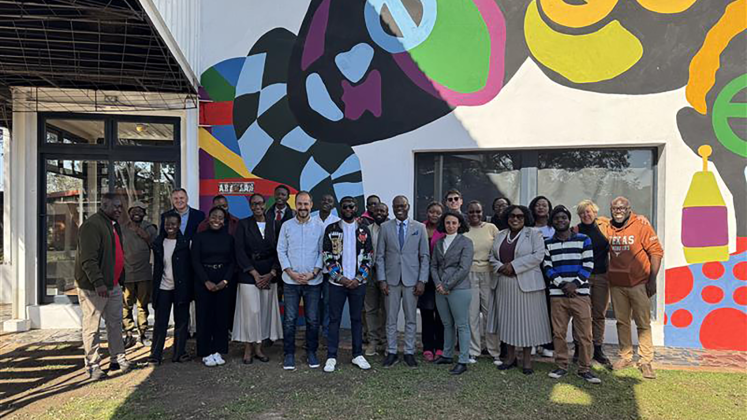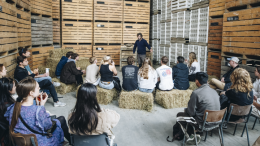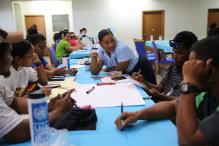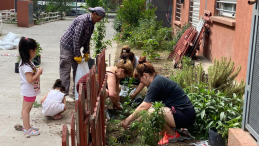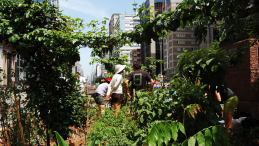Harare, Zimbabwe – 31 July 2025 – The United Nations University Institute for Water, Environment and Health (UNU-INWEH), in collaboration with the Embassy of Canada to Zimbabwe and Mbare Art Space, convened an inspiring event titled “Art for Environmental Justice: Unlocking the power of art to fight consumerism, inequity and pollution” in Harare, Zimbabwe.
The event brought together artists, scientists, diplomats, and environmental advocates for an interactive dialogue exploring the intersection of art and environmental sustainability. The discussion featured renowned Zimbabwean artist Moffat Takadiwa, art curator and researcher Laura Ganda, and UNU-INWEH Director Prof. Kaveh Madani, moderated by Sogol Jafarzadeh, UN and Government Relations Coordinator at UNU-INWEH. The closing remarks were delivered by H.E. Ambassador Adler Aristilde, the Ambassador of Canada to Zimbabwe, High Commissioner to Malawi and Botswana.
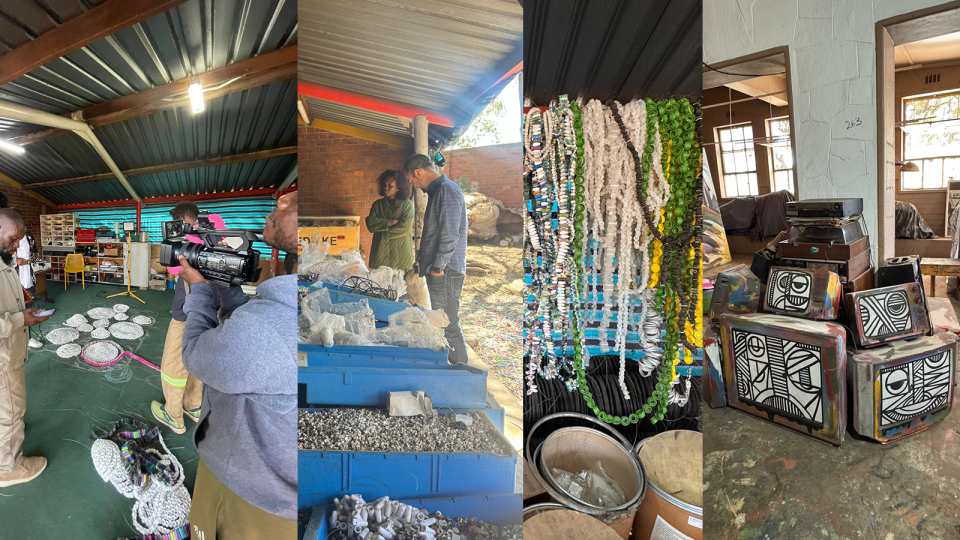
Following a guided tour of Mbare Art Space by its founder, Moffat Takadiwa, the conversation explored how art can provoke thought, foster emotional connections, and bridge the gap between scientific knowledge and public engagement—particularly in communities directly affected by environmental degradation. The event brought together more than forty artists, diplomats, scientists, and local activists in this repurposed beer hall, now a vibrant space for workshops, artist residencies, and exhibitions.
Opening the discussion, Prof. Madani reflected on the unique ability of cultural expression to transcend disciplinary and political boundaries. “Art tells stories that science cannot,” he said. “It can unite people across backgrounds, create empathy, and inspire action in ways that data alone cannot achieve. Science gives us facts, but art gives us goosebumps and sometimes goosebumps are what drive change.”
Curator Laura Ganda, known for connecting artists working with found materials to scientific collaborators, explained how the project began by questioning why artists were drawn to discarded objects. “We wanted to see if these materials could tell environmental stories,” she noted. “Plastic, fabric, metal each has a history and a voice. When communities see these transformed into art, the narrative becomes emotional, personal, and relatable. The message is no longer abstract, it’s in their hands and part of the communities stories.”
For Moffat Takadiwa, whose monumental sculptures made from discarded consumer goods have gained international acclaim, the role of art is both to inspire and to challenge. “Art is both subtle and provocative. It draws people in, makes them listen, and asks difficult questions,” he said. “In our cultures, sharing and care are deeply rooted values—reviving these can help tackle global problems. These small acts from our traditions can solve big world problems.”
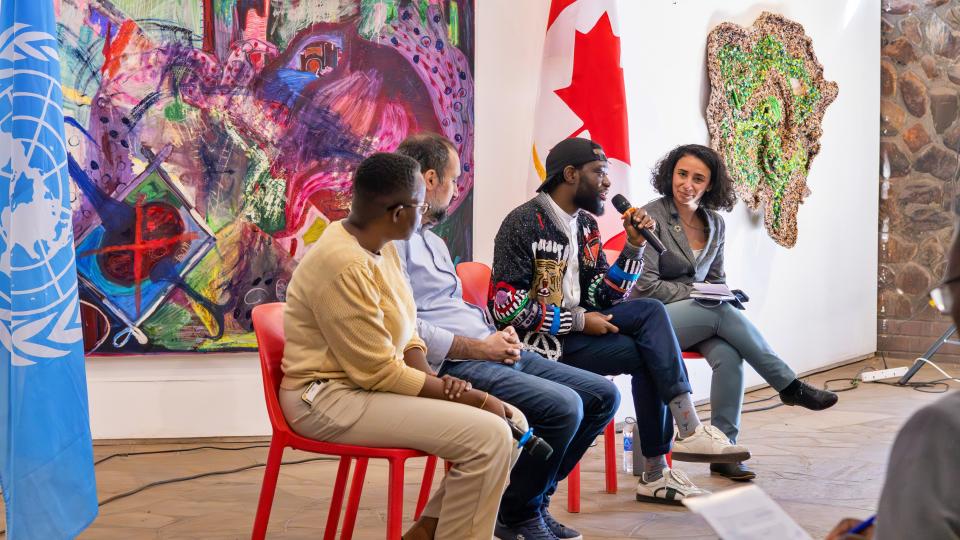
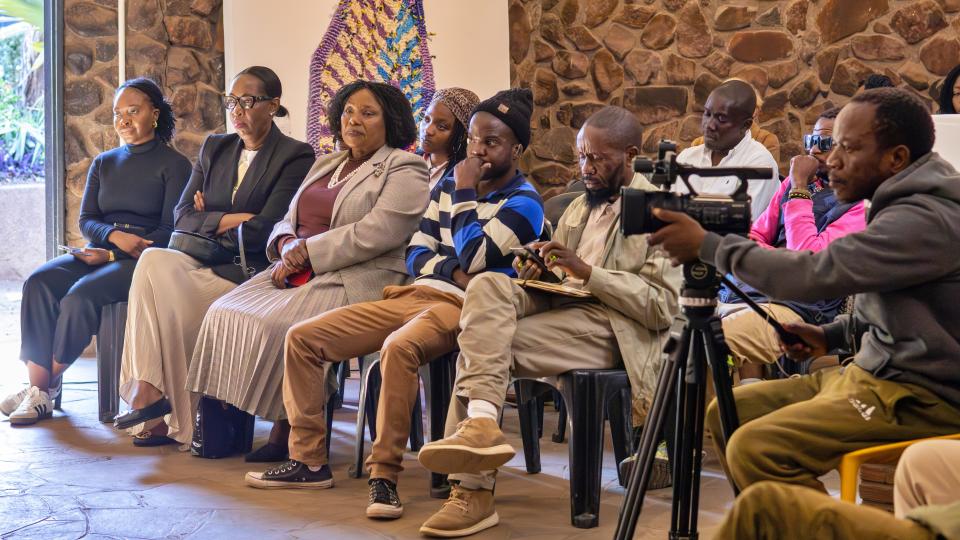
Throughout the discussion, panelists addressed systemic inequities in global production and consumption, explored how community-centered curation can make environmental dialogue more inclusive, and shared stories showing how discarded materials can be transformed into powerful symbols of resistance and renewal. They emphasized that no single solution can work for every context—and that a “one-size-fits-all” approach can be harmful—while highlighting how the gap between vastly different life experiences can be bridged through art that asks difficult questions and provokes meaningful reflection.
The Ambassador of Canada to Zimbabwe, H.E. Adler Aristilde, reaffirmed Canada’s commitment to supporting inclusive environmental and cultural initiatives. “Art is not only a mirror—it is a tool for transformation,” he said. “When it makes us feel, see differently, and take action, it becomes a force for justice and sustainability. The art we’re seeing here calls out injustice and opens new pathways for community-led action on sustainability. Spaces like Mbare Art Space show how culture can inspire resilience and hope.”
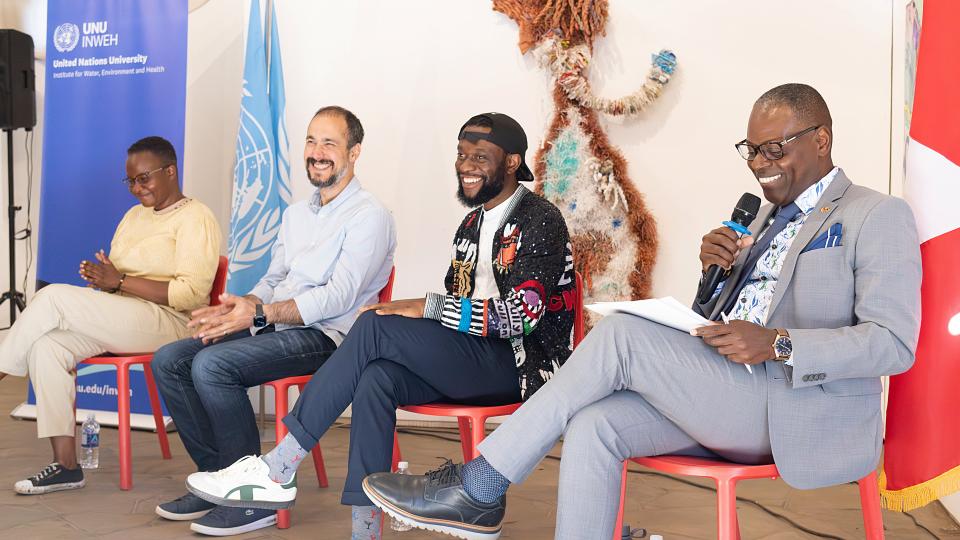
Moderator Sogol Jafarzadeh highlighted the event’s central theme of collaboration between disciplines and communities: “We need more spaces where scientists, artists, and communities co-create—not just exchange ideas. Art can translate complex environmental realities into stories and emotions that resonate with people’s daily lives, empowering them to see themselves as part of the solution.”
A highlight of the event was the “Wall of Memories”, a participatory installation inviting guests to leave written messages, reflections, and creative expressions inspired by the discussion. Participants covered the wall with personal insights linking art, science, justice, and environmental stewardship, transforming it into a living archive of shared commitments.
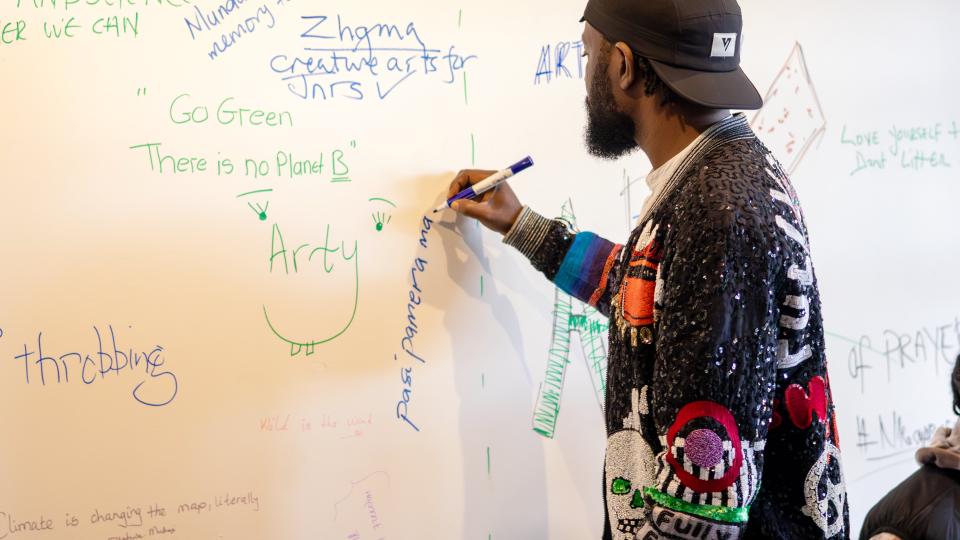
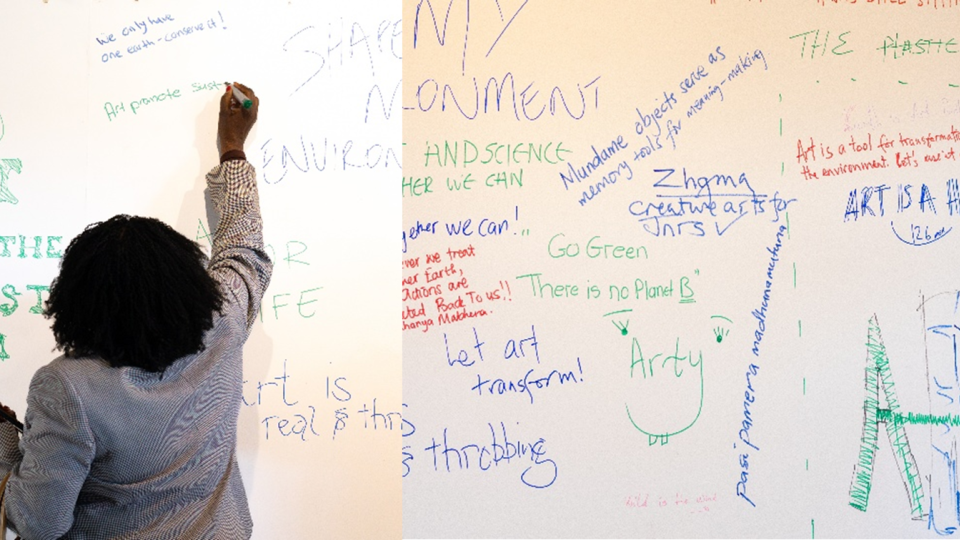
“What resonated most for me was the power of art to deliver messages about environmental protection—especially the way discarded items, often seen as useless, can be transformed to communicate an entirely new and impactful story,” Tariro Mbiba, Environmental Law and Justice Policy Fellow at UNU-INWEH while reflecting on the intersection of creativity and advocacy.
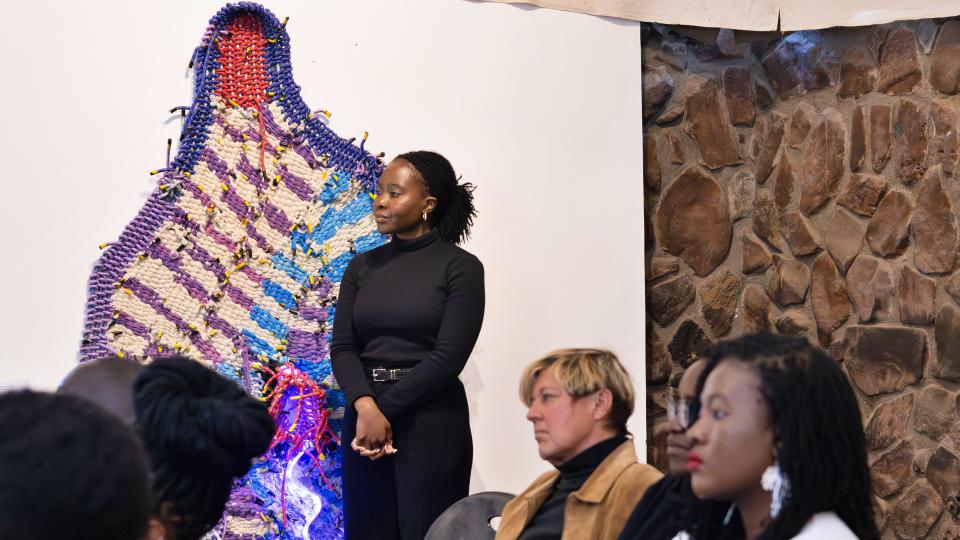
By bringing together voices from art, science, and diplomacy, the event demonstrated the transformative power of interdisciplinary collaboration in tackling environmental challenges. The conversations underscored that environmental justice is not solely the domain of scientists or policymakers, it thrives when communities are engaged through creativity, culture, and shared narratives. This gathering at Mbare Art Space marked not just a single evening of dialogue, but the strengthening of a growing movement in Zimbabwe and beyond one that embraces art as an essential partner in building equitable and sustainable futures.
Click here to watch the whole event.

